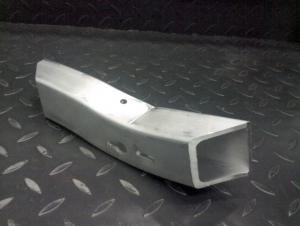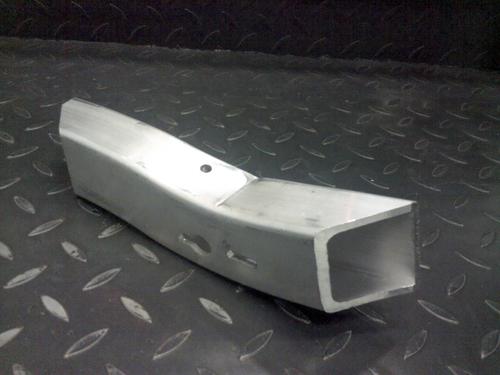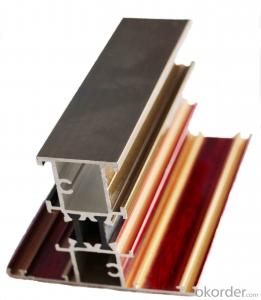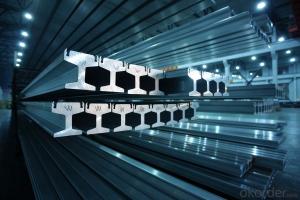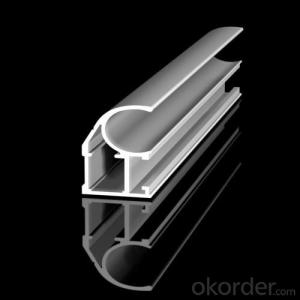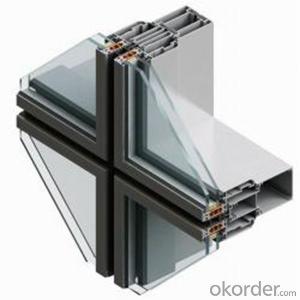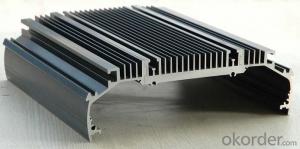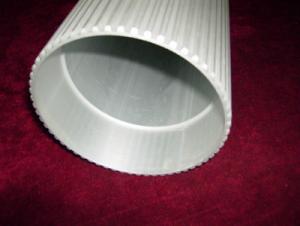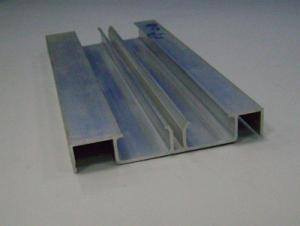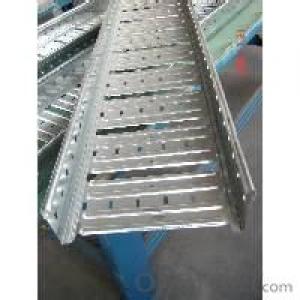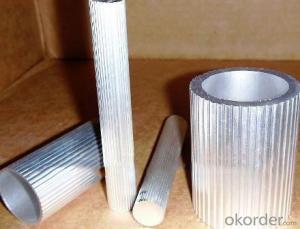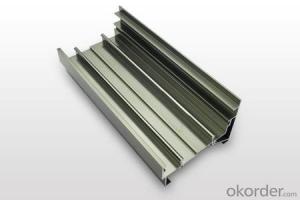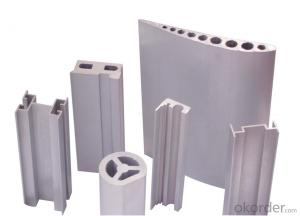Bosch Extruded Aluminum Profiles - Aluminium Profile
- Loading Port:
- China Main Port
- Payment Terms:
- TT OR LC
- Min Order Qty:
- -
- Supply Capability:
- -
OKorder Service Pledge
Quality Product, Order Online Tracking, Timely Delivery
OKorder Financial Service
Credit Rating, Credit Services, Credit Purchasing
You Might Also Like
Aluminium Profile
Our advantages:
1)we can provide"one- stop service from melting,extruding,surface treatment,machining,welding,assembling to mould design & building.
2)we have a good capacity of precise machining,cnc machining.
3)we can provide good quality with reasonable price.
Service:
Our advantages:
1)we can provide"one- stop service from melting,extruding,surface treatment,machining,welding,assembling to mould design & building.
2)we have a good capacity of precise machining,cnc machining.
3)we can provide good quality with reasonable price.
Products:
Description | Aluminium Profiles |
Alloy | Al 6063 T5 /T6 or 6061 or 6005 or as per customers' need |
Finish | Anodizing or powder coating with various colors |
Packing | Foam sheet,poly bag,plastic bag,carton |
Brand | YMJ |
Original place | China |
Certificate | ISO9001 |
Equipments:
7extruders,2 six meters long anodizing lines,1 twelve meters long anodizing line(including dyeing & electrolysis).1 powder coating line,5 melting lines,12 CNCs(including 2 machines which can mill 6.5m long profile),10 argon arc welding machines and multiple machines for cutting,drilling,punching,milling,shearing and bending,2 spectrum scanners,1 projective instument,1 extension test machine,1 mechanical property tester,1 Rohs tester and 1 metallurgical microscope.Service:
We're a well- established manufacture for aluminium products,we're confident we can give our customers complete satisfication.
We can provide good quality with reasonable price.- Q: How do you prevent galvanic corrosion when combining aluminum profiles with concrete or masonry?
- One effective method to prevent galvanic corrosion when combining aluminum profiles with concrete or masonry is to use a protective barrier. Applying a suitable coating or corrosion-resistant material on the aluminum surface can create a barrier between the aluminum and the concrete/masonry, preventing direct contact and minimizing the risk of galvanic corrosion. Additionally, using isolation materials such as gaskets or non-conductive joint fillers between the aluminum profiles and the concrete/masonry can further help to prevent galvanic corrosion by isolating the dissimilar metals. Regular inspection and maintenance are also essential to identify any potential corrosion issues early on and take necessary preventive measures.
- Q: T6 should be 140MPa, while the aluminum profile specification should be 150MPa. Should that be the standard?Code for design of glass curtain wall... And the calculation formula of bolt connection, what is the compressive strength value of aluminum profile?Prawns help you, 3Q~
- In this case, not only is the bending deformation produced by tensile stress, it is a large part of the moment and shear, in a large error.
- Q: Are aluminum profiles suitable for lighting fixtures?
- Lighting fixtures can greatly benefit from the use of aluminum profiles. Aluminum, being a lightweight and versatile material, offers numerous advantages for lighting applications. To begin with, aluminum profiles possess excellent thermal conductivity. This means they effectively dissipate the heat generated by the lighting fixtures. Maintaining a cooler operating temperature is crucial as excessive heat can shorten the lifespan and impact the performance of the lighting components. By utilizing aluminum profiles, the longevity and efficiency of the lighting fixtures are enhanced. Moreover, aluminum profiles are resistant to corrosion, making them suitable for both indoor and outdoor lighting fixtures. This corrosion resistance ensures that the fixtures can endure harsh environmental conditions, such as high humidity or moisture exposure, without deteriorating or losing functionality. Additionally, aluminum profiles are easily customizable and can be tailored to meet various lighting requirements. They can be extruded into different shapes and sizes, allowing for flexibility in the design of lighting fixtures. This versatility empowers manufacturers to create sleek and modern lighting solutions that seamlessly integrate into different architectural designs and spaces. Furthermore, aluminum profiles offer aesthetic appeal as they can be powder-coated or anodized in a wide array of colors. This provides a plethora of options to match different interior or exterior design themes. Lastly, aluminum is a sustainable material that can be fully recycled. By choosing aluminum profiles for lighting fixtures, one contributes to reducing environmental impact and supports the principles of sustainability. To summarize, aluminum profiles are highly suitable for lighting fixtures due to their thermal conductivity, corrosion resistance, versatility, aesthetic appeal, and sustainability. This is why they are extensively used in the lighting industry.
- Q: What specific coatings or finishes are necessary for aluminum profiles to withstand cold weather conditions?
- <p>In cold climates, aluminum profiles may require special coatings or finishes to enhance durability and resistance to corrosion. These can include anodizing, which forms a protective oxide layer on the aluminum surface, or powder coating, which provides a hard, durable finish. Additionally, thermal breaks may be incorporated into the design to reduce heat transfer and prevent condensation. It's crucial to select the right finish based on the specific environmental conditions and the intended use of the aluminum profile.</p>
- Q: Surface treatment method of aluminium profile
- With a little bit of gauze, destroy the surface of the oxide layer, destroy (also white bar destroyed) in cloth with anhydrous alcohol, rub on coated white petrolatum, anti oxidation
- Q: What are the different surface etching options for aluminum profiles?
- Some different surface etching options for aluminum profiles include chemical etching, mechanical etching, and laser etching. Chemical etching involves using a chemical solution to remove layers of the aluminum surface, creating a desired pattern or texture. Mechanical etching involves using abrasive materials or tools to physically remove material from the surface. Laser etching uses a laser beam to selectively remove material from the surface, creating precise and intricate designs.
- Q: This question asks about the various types of aluminum profiles that are utilized specifically for constructing wall frames.
- <p>Aluminum profiles for wall frames come in various types, each serving specific purposes. Common types include: 1) Structural profiles, which provide the main support and strength to the frame; 2) Cover profiles, used to conceal joints and fasteners, enhancing the aesthetic appeal; 3) Insulation profiles, designed to provide thermal insulation; 4) Glazing profiles, used to hold glass or other transparent materials in place; 5) Corner profiles, for joining two walls at a right angle; 6) Sealing profiles, to ensure weatherproofing and airtightness; and 7) Special profiles, tailored for unique architectural designs or specific functions. Each type is chosen based on the structural requirements, design aesthetics, and performance needs of the wall system.</p>
- Q: Can aluminum profiles be used for shopfitting and retail displays?
- Yes, aluminum profiles can definitely be used for shopfitting and retail displays. Aluminum is a versatile material that is lightweight, yet strong, making it ideal for creating structures and fixtures for retail spaces. Aluminum profiles can be easily customized and fabricated to fit specific design requirements, allowing for flexibility in creating various display and shopfitting solutions. Additionally, aluminum profiles offer a sleek and modern aesthetic, which is often desired in retail environments. They are also highly durable and resistant to corrosion, ensuring their longevity in high-traffic areas. Overall, aluminum profiles are an excellent choice for shopfitting and retail displays due to their versatility, strength, customization options, and aesthetic appeal.
- Q: This question asks for methods to ensure that the installation of aluminum profiles is both cost-effective and efficient.
- <p>To ensure the installation of aluminum profiles is cost-effective and efficient, follow these steps: 1) Plan carefully: Use accurate measurements and detailed plans to minimize waste and rework. 2) Use quality materials: Invest in high-quality aluminum profiles to reduce maintenance and replacement costs. 3) Employ skilled labor: Well-trained installers can complete the job faster and with fewer errors. 4) Optimize the installation process: Streamline the process to reduce time and labor costs. 5) Regular maintenance: Proper care and maintenance can extend the life of aluminum profiles, saving on replacement costs. 6) Compare suppliers: Shop around for the best prices and quality to minimize costs. 7) Use modular designs: Modular systems can be more efficient to install and easier to modify in the future.</p>
- Q: How do you prevent galvanic corrosion in marine environments with aluminum profiles?
- One way to prevent galvanic corrosion in marine environments with aluminum profiles is by using sacrificial anodes made of a different, more active metal. These anodes, typically made of zinc or magnesium, are connected to the aluminum profiles and act as a sacrificial material that corrodes instead of the aluminum. This helps in protecting the aluminum profiles from galvanic corrosion. Additionally, proper insulation and coating of the aluminum profiles can also be effective in preventing direct contact with other metals and reducing the risk of galvanic corrosion.
Send your message to us
Bosch Extruded Aluminum Profiles - Aluminium Profile
- Loading Port:
- China Main Port
- Payment Terms:
- TT OR LC
- Min Order Qty:
- -
- Supply Capability:
- -
OKorder Service Pledge
Quality Product, Order Online Tracking, Timely Delivery
OKorder Financial Service
Credit Rating, Credit Services, Credit Purchasing
Similar products
Hot products
Hot Searches
Related keywords
